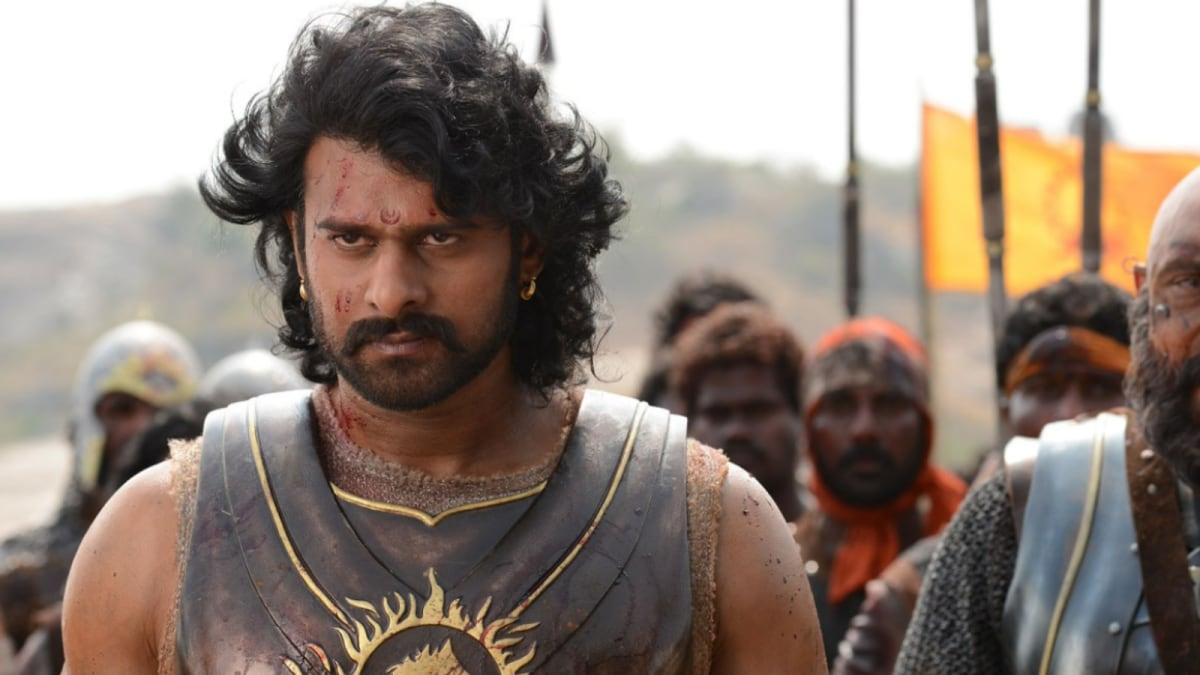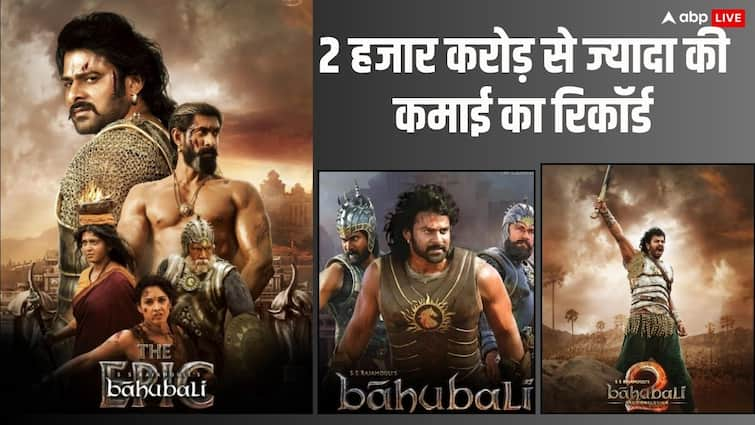- December 22, 2023
Salaar: Part 1 – Ceasefire Review: Star Turns From Prabhas, Prithviraj Sukumaran Are The Main Draws

A still from Salaar. (courtesy: YouTube)
The mind-numbing power of unrelenting violence is on full display over all of three hours in the unabashedly gory Salaar: Part 1 – Ceasefire.All the blood-letting that the film revels in has a somniferous effect on the audience, lulling it into a desensitised state that serves to make the shocks somewhat palatable.
Although the Telugu-language epic – this critic watched the film’s Hindi dub – is set in a terrain that is far less dusty than the one in the two chapters of writer-director Prashanth Neel’s Kannada actioner KGF was, the heat that it generates is just as scalding and the decibel levels it rises to are nearly as high.
Aadhya (Shruti Haasan), who returns from the United States to a chaotic universe where some people want her dead because of an act that her father committed years ago, is the human receptacle into which the story flows. The nature of the narration that she receives from the man deployed to keep her safe boggles her mind.
Having heard the convoluted saga of Khansaar, a dreaded and lawless country divided into over 100 territories and populated by three tribes, to its bitter end, she quips: Wait, wait, I need a drink. Daaru hai kya? Well, that is exactly what the response of most of us would be unless we have figured out how to keep abreast of director Prashanth Neel’s breathless storytelling style.
It thrives on piling words upon words, sounds upon sounds, and images upon images without creating space for the slightest crevice for light to seep into. The film – it rattles along like a runaway train – does not give the audience any time to think.
But that is not necessarily meant as derision. There is something about the hurtling, bewildering rhythm of Salaar: Part 1 that ensures that the audience is never let off the hook. Such is the pace at which the film dishes out the details of its plot and sub-plots, keeping up with it takes some doing.
By not allowing the viewer to pause to wonder what is going on, the film manages to pass off its dizzying momentum not only as an integral part of its design but also as its primary selling point. By the end of the maximalist pulp that it foists upon us, we actually push our cognitive and auditory faculties as far as we can to grasp the goings-on with varying degrees of success.
The first half of Salaar: Part 1 is devoted entirely to the story of the burly brooding and invincible Devaratha (Prabhas), his relationship with his mother (Easwari Rao) and his friendship with his pal from 25 years ago, Varadha Raja Mannar (Prithviraj Sukumaran), son of the second wife of the ruler of present-day Khansaar, Raja Mannar (Jagapathi Babu).
Over about 90 minutes, the film sets the stage for Deva’s dramatic appearance in Khansaar, a 1000-year-old principality where a bloody battle of succession is on between the ruling Mannar tribe and the Shouraangya and Ghaniyaar tribes for the throne occupied by Varadha’s father.
Varadha and Deva haven’t seen each other for years but as matters go out of hand in Khansaar and dangers of a palace coup loom over the rulers, the former requests the latter for help, aware of how formidable his long-separated friend is as a fearsome fighter.
Varadha’s enemies have enlisted the support of militias from across the world – Russia, Austria, Ukraine, Serbia – but Deva is a veritable one-man army. He is, expectedly, more than a handful for any outfit or individual.
In one crucial scene in the first half, the reluctant Deva swings into action to save Aradhya from a band of vicious goons after his mother exhorts him to break his vow of non-violence. It is at her bidding that he had decided never to fight ever again. Once the sluice gates are thrown open, it is impossible to stop Deva.
He goes berserk every time his childhood pal Varadha faces any danger. He turns especially fierce when a girl is in distress. One character points out that in every damsel who faces a threat from men, he sees his mother.
Be it machine guns, machetes or just his bare hands, he is head and shoulders above any enemy who gets in his way. He bulldozes into situations in which a lot of blood is spilled amid impalements, dismemberments and decapitations.
It isn’t a pretty sight, but the heightened performative quality that the choreography imparts to the action – Deva’s gaze and gait are that of a cocky prize boxer who walks into the ring knowing full well that he is destined to win – delivers a string of unsettlingly gory but strangely mesmerizing moments.
The visual palette of the film is composed of muted hues rather than full splashes of stark colour. Salaar: part 1 is set in what looks and feels like an exceedingly dim universe where the stray rays of light that are visible are never of the uninterrupted and illuminating kind.
The subdued visuals, halfway through the second half, are punctuated with the dull russet of the saris, a couple of brightly designed umbrellas and a multi-coloured kite and then, in the climactic passages, broken by the sight of blood.
Cinematographer Bhuvan Gowda’s camerawork and lighting (aided, of course, by the hyper-kinetic visual effects and the elaborate digital intermediate work) produce frames that are dominated by fading browns, grimy blacks and gloomy greys – not all that different from how the images were in KGF – to create a grim portrait.
The sound design and the background score, which are as intrusive as it was in KGF, bolsters the feral nature of life in Khansaar, a place where the ruler thrives on instilling fear in his subjects and his foes. He says at one point: We are all violent men; violence is in our blood.
Neither is that all. One of Varadha’s main adversaries drugs 100 men over a period of time and turns them into bloodthirsty hounds who pounce like hyenas on anything that is red. One of the two protagonists warns that Khansaar will soon turn red either because of leaping flames or flowing blood. The film delivers generous doses of both.
Solid star turns from Prabhas and Prithviraj Sukumaran are the main draws of Salar: Part 1 – Ceasefire. The rest of the film’s appeal lies in the lure of unbridled excess.
Cast:
Prabhas, Prithviraj Sukumaran and Shruti Haasan
Director:
Prashanth Neel







